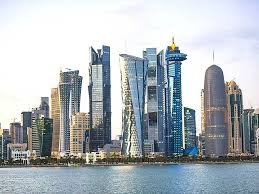Coral reefs appear to look distinctly like underwater plants giving rise to an incorrect evaluation about their status. But looks can be deceptive. They are actually invertebrate creatures within the class Anthozoa of the phylum Cnidaria
No matter where you are or where you go, you’re never far from Coral, the red, semi-precious gemstone popular in India, where it is known as Lal Moonga, a stone that has for centuries embellished traditional jewellery – embedded in rings, ear-rings, bracelets and beaded necklaces, clips, pins, broaches.
But a greater significance lies in its astrological importance in shaping people’s tides of fortune one way or another.
But before we go any further into the cosmic powers of coral and its connection with the planet Mars together its physical, mental and emotional effects on humans in their daily lives, lets dive a little deeper to find out more about its origin and its connection to Planet Earth’s vital ecosystem. Let’s talk about Coral reefs the living organisms that breathe life and power into these potent and beautiful gemstones.
This year week-long Coral Reef Awareness Week began from July 21 to 27. Ever since the awareness week started in 2003, it is held for a week starting from the third Monday in the month of July.
The week aims to raise awareness about the importance of coral reefs and the threats they face, such as climate change and human activities. It is only appropriate that we get to know more about its significance, especially with regard to Planet Earth’s health.
Coral reefs are one of the most diverse and important elements of the earth’s ecosystem, but there are threats that coral reefs are facing, including climate change and tourism
Marine scientists revealed that in 1950 the coral reefs had been reduced by 50 per cent. A 2020 conference has predicted that by 2050 more than 90 per cent would die due to global warming, pollution and beachfront construction of hotels and resorts
The process of coral reef building is carried on by tiny creatures held together by calcium carbonate reefs are marine. But they grow very slowly, increasing only by 0.5 to 2 centimeters in a year. While they occupy less than 0.1% of the world’s ocean area, around 25 per cent of marine life make their homes within their safety and refuge.
Since they thrive in sunlight, most coral reefs are found in clear, shallow waters with warmer temperatures. The warmer temperature of Mediterranean countries is one reason why the coral found in these parts is of the best quality. That’s why Italian coral is the number one choice of Indian when they buy coral or Moonga jewellery.
Highest concentration of coral reef
Perhaps the best known and most outstanding example of coral reef concentration is Australia’s Great Barrier Reef in Australia’s is the northeast. It is one of the best-known coral reefs in the world, more than 1,250 miles long.
The other places with the largest concentrations of coral reef are:
Indonesia’s Raja Ampat: Located at the intersection of the Indian and Pacific oceans, 75 per cent of the world’s coral reef is found here with over 600 species of coral. That’s why it is also known as the ‘species factory’.
Solomon Islands: Over 494 species, spread across 3591 square kilometers.
Fiji: Spread over 10,000 sq. Kms, the place has 390 species of coral.
Red Sea: 300 species, spread over 1200 miles. This area is reportedly 5000 years old
No matter where you are or where you go, you’re never far from Coral, the red, semi-precious gemstone popular in India, where it is known as Lal Moonga, a stone that has for centuries embellished traditional jewellery – embedded in rings, ear-rings, bracelets and beaded necklaces, clips, pins, broaches.
But a greater significance lies in its astrological importance in shaping people’s tides of fortune one way or another.
But before we go any further into the cosmic powers of coral and its connection with the planet Mars together its physical, mental and emotional effects on humans in their daily lives, lets dive a little deeper to find out more about its origin and its connection to Planet Earth’s vital ecosystem. Let’s talk about Coral reefs the living organisms that breathe life and power into these potent and beautiful gemstones.
This year week-long Coral Reef Awareness Week began from July 21 to 27. Ever since the awareness week started in 2003, it is held for a week starting from the third Monday in the month of July.
The week aims to raise awareness about the importance of coral reefs and the threats they face, such as climate change and human activities. It is only appropriate that we get to know more about its significance, especially with regard to Planet Earth’s health.
Coral reefs are one of the most diverse and important elements of the earth’s ecosystem, but there are threats that coral reefs are facing, including climate change and tourism.
Marine scientists revealed that in 1950 the coral reefs had been reduced by 50 per cent. A 2020 conference has predicted that by 2050 more than 90 per cent would die due to global warming, pollution and beachfront construction of hotels and resorts
The process of coral reef building is carried on by tiny creatures held together by calcium carbonate reefs are marine. But they grow very slowly, increasing only by 0.5 to 2 centimeters in a year. While they occupy less than 0.1% of the world’s ocean area, around 25 per cent of marine life make their homes within their safety and refuge.
Since they thrive in sunlight, most coral reefs are found in clear, shallow waters with warmer temperatures. The warmer temperature of Mediterranean countries is one reason why the coral found in these parts is of the best quality. That’s why Italian coral is the number one choice of Indian when they buy coral or Moonga jewellery.
Highest concentration of coral reef
Perhaps the best known and most outstanding example of coral reef concentration is Australia’s Great Barrier Reef in Australia’s is the northeast. It is one of the best-known coral reefs in the world, more than 1,250 miles long.
The other places with the largest concentrations of coral reef are:
Indonesia’s Raja Ampat: Located at the intersection of the Indian and Pacific oceans, 75 per cent of the world’s coral reef is found here with over 600 species of coral. That’s why it is also known as the ‘species factory’.
Solomon Islands: Over 494 species, spread across 3591 square kilometers.
Fiji: Spread over 10,000 sq. Kms, the place has 390 species of coral.
Red Sea: 300 species, spread over 1200 miles. This area is reportedly 5000 years old
Coral gemstone is ideal for Scorpio and Aries zodiac signs. These gemstones are well-known for their impact on the planet Mars and protects the wearer of this gem from blood and heart disorders.
The most widely available and popular variety of Coral gemstones are Italian Coral and Japanese Coral.
Italian Coral Gemstone: is one of the most commonly traded varieties in India, notably in North India, found in the Mediterranean Sea at depths ranging from 10 to 300 meters below sea level.
The demand for Italian Red Coral Gemstones is highest in the jewelry industry, as the gemstones from Italy and Tunisia are of exceptional quality. By comparison, the quality of coral from China and Japan are of poorer grade.
The Italian Gemstone is used to enhance a person’s regulating abilities and optimistic mood. The stone helps the user regulate their passionate sides and boosts their self-confidence and courage..
Japanese Coral Gemstone: is equally popular in India, although it is costlier than the Italian variety. It is customary was to gift this gemstone in the form of jewellery to newly-wedded couples, especially, in Assam, Bhutan, Manipur, Bengal, and Nepal.
Japanese coral is considered the gemstone of Lord Hanuman, the God of Solidarity. This coral stone provides several medicinal benefits, including relief from fever and stomach pains. .
Difference Between Japanese and Italian Coral
Color: Italian coral is recognized for its deep, rich red hue, whereas Japanese coral is often a lighter shade of red or pink. The color difference between the two stems from their differing chemical compositions.
Rarity: Japanese coral is far more rare because it is only found in a few places n the Pacific Ocean, It is much more difficult to collect, making it even more precious.
Price: Due to its scarcity, Japanese coral is significantly more costly than Italian coral. Japanese coral can cost up to 10 times more than Italian coral.
DISCLAIMER: The views and opinions expressed in this article are solely those of the author and do not necessarily reflect the official policy or position of Pravasi Samwad. Pravasi Samwad is not responsible for the accuracy, completeness, or reliability of any information presented.








